If there’s anything we’ve learned from recent news, it’s that there are a lot of hidden health threats waiting in the wings to rear their ugly heads. While it’s impossible to predict what’s next on the horizon, or to manage all of the circumstances that might set you up for illness, there are two major factors you can control: The health of your cells and the state of your immune system.
“Healthy cells throughout the body are a vital part of our defense system and are a big part of being able to fend off pathogens,” says Dr. Bill Rawls, M.D., medical director of Vital Plan. “Our cells aren’t defenseless; they can help protect us from threats.” Additionally, a strong and healthy immune system helps fend off pathogenic viruses and bacteria before they take hold and make you sick.
If you do happen to come down with something, healthy cells coupled with a robust immune system can lessen the severity of symptoms or shorten their duration.
Getting at least eight hours of sleep a night and keeping stress in check go a long way towards bolstering cellular health and immunity against a virus. So does staying active. For example, adults who got at least some aerobic exercise five or more days a week experienced 43% fewer sick days during the cold and flu season compared to those who were mostly sedentary, according to a study in the British Journal of Sports Medicine.
But one of the most important strategies is to improve what goes into your body — as in, what you feed your cells.
Why Plants Are Vital to Cellular Health and Immunity
“Eating crappy food trashes your cells and immune system, makes you susceptible to illness, and sets you up for a lot of problems,” Dr. Rawls says. Indeed, one study published in the Journal of Traditional Chinese Medical Sciences found that children who reported consuming a diet full of processed and high-sugar foods and with lots of meat and few vegetables were more likely to suffer from recurrent respiratory infections compared to those who ate healthier.
On the flip side, avoiding processed and fried foods and increasing your intake of fresh vegetables, fruit, herbs, spices, and plant-based protein sources like beans and nuts can bolster your cells and immune system. For starters, plants provide plenty of fiber, which helps feed the good bacteria in your gut and regularly flush your GI tract of harmful bacteria looking to gain a foothold. And, given that 70% of your immune system resides in your gut, a healthy microbiome is key to staying healthy overall, explains Dr. Rawls.
People who eat ample fiber also have better lung function than those who don’t eat as much, according to an analysis of nearly 2,000 adults published in the Annals of the American Thoracic Society. But plants’ immune-boosting power goes beyond fiber.
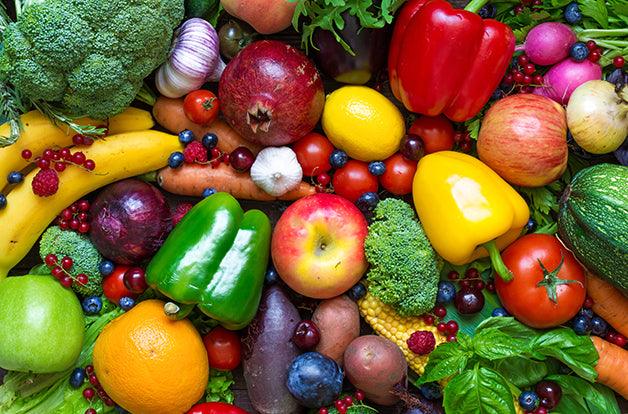
Vegetables, fruits, and herbs provide a veritable pharmacy of phytochemicals, natural plant compounds that work directly to support your cells and immune system so that they can more effectively fight germs. While no one can say for sure how the phytochemicals in plants work, Dr. Rawls says, it’s likely that they support communication between your cells.
“Immune cells have to communicate well in order for your entire system to function optimally,” He says. These cells serve as messengers, sending information back and forth that helps the body dispatch the right white blood cells and launch the appropriate response to an attack or invader.
Like humans, plants also must deal with an onslaught of potentially harmful viruses and bacteria. What’s different, though, is how they’ve developed what Dr. Rawls calls a natural intelligence to fight them.
“Plants phytochemicals found in herbs and food counter the microbes,” he says. “Phytochemicals actually help the immune system by promoting cellular health and reducing cellular stress.”
Your cells will reap the rewards by eating a lot of different plants, but certain foods and herbal supplements are particularly beneficial at targeting cell health and supporting the human immune system. Here are the top 11 plants and herbs to try so you can stay well this cold and flu season.
Cellular- & Immune-Supportive Foods & Herbs
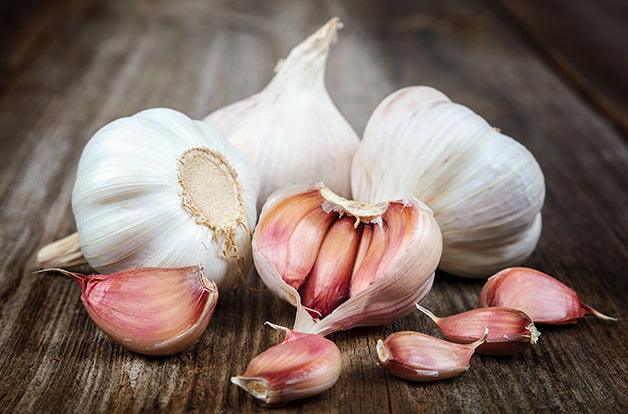
1. Garlic
Long used for therapeutic benefits, garlic is known for its ability to help balance the good and bad microbes in the microbiome (the sum of all the microbes in your body). More recent research shows garlic also helps enhance the immune system and support cellular health by stimulating certain immune cells and regulating secretion of cytokines — natural chemicals produced by immune cells that help the immune system communicate and function.
In one double-blind, placebo-controlled study published in Advances in Therapy, participants took either a garlic supplement or a placebo for 12 weeks from November to February. During that time, only about a third of people in the garlic group got colds, while nearly all of the placebo group did. The placebo-takers were also more likely to catch more than one cold during the three-month period, and their symptoms persisted longer (5 days versus 1.5 for the garlic group).
You can’t go wrong adding garlic to food, especially in its raw form (try it in salads and salad dressings). But you’d need to eat three big cloves a day to to achieve the maximum benefit, says Dr. Rawls, so supplementing with garlic is a wise bet.
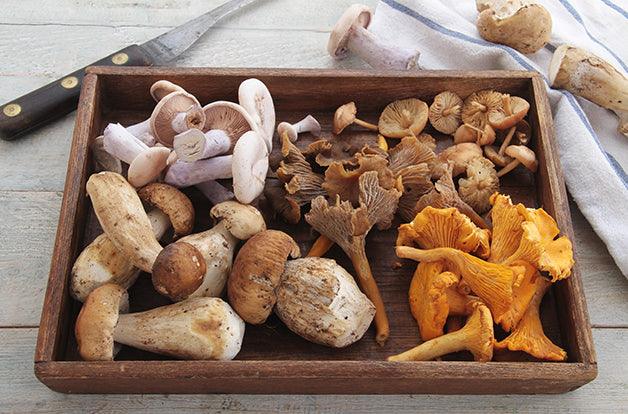
2. Mushrooms
While alternative and Eastern medicine practitioners have relied on medicinal mushrooms to help fight illness for centuries, modern-day researchers are now starting to uncover how key fungi phytonutrients — particularly beta-glucans — work to support your cells and immune system.
Beta-glucans are complex polysaccharides or sugars that live in the cell walls of mushrooms, and they seem to act on immune receptors and activate various immune cells, according to a paper in the Journal of Hematology and Oncology.
Among the mushrooms you might find at the grocery store or farmer’s market, “Any will do,” says Dr. Rawls. “But shiitake, maitake, oyster, lion’s mane, and turkey tail mushrooms have the highest immune benefits.”
Another powerful mushroom: Reishi. Preliminary studies suggest reishi mushrooms help modulate the immune system by increasing the activity of immune cells and the production of communication-enhancing cytokines, according to a research review in Integrative Medicine: A Clinician’s Journal. Reishi is one you won’t find in grocery stores and will need to get in supplement form; aim for 350 mg daily.
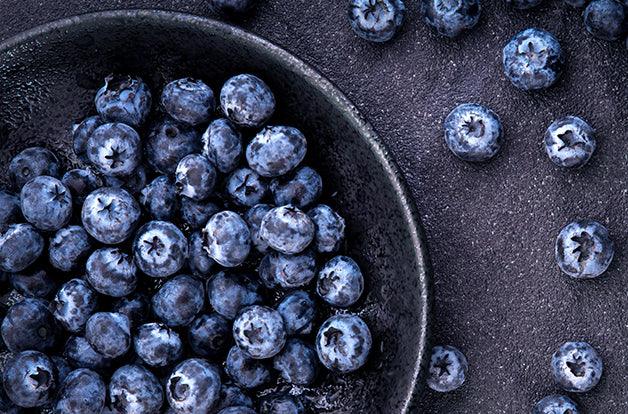
3. Blueberries
These sweet berries contain more antioxidants than all other commonly consumed fruit, including a high level of one type known as flavonoids. A review of 14 studies by researchers in New Zealand found that consuming flavonoids, either through food, juice, or supplements, reduced upper respiratory infections by 33% compared with controls, plus cut sick days by 40%.
One type of flavonoid in particular — quercetin, found in high levels in dark blue and red fruits — has been shown to have potent antiviral properties, even helping to stop the virus from replicating and reducing the viral load and lung inflammation.
Other foods rich in quercetin and other flavonoids include apples, onions, and green tea (see below for more on green tea’s benefits). To get your fill, add berries to smoothies, yogurt parfaits, and desserts, snack on apples, add onions to salads and sandwiches, and sip green tea.

4. Andrographis
Although not a plant you eat, this native to India has been used for centuries for a wide range of benefits, including its ability to support a healthy immune system. “For viral illnesses, I would rate andrographis as one of the best plants available,” Dr. Rawls says. He recommends taking 250 mg to 500 mg of andrographis a day.
Indeed, research shows supplementing with andrographis helps significantly reduce symptoms of the common cold. Patients taking andrographis extract reported greater relief from nasal secretions, tiredness, sore throat and sleeplessness after just two days than those taking a placebo, according to findings in the journal Phytomedicine. After four days, the andrographis group also reported a significant decrease in all symptoms, including cough and headache.
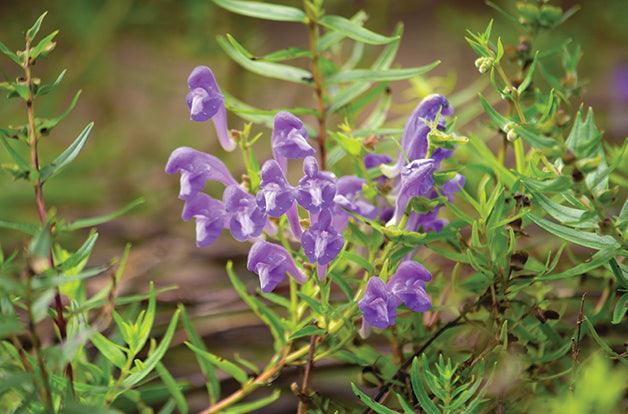
5. Chinese Skullcap
This species of flowering plant from the mint family is known as a “heat-clearing” and phlegm-removing herb in Traditional Chinese Medicine (TCM), an ancient practice for preventing and treating various diseases. Its reputation comes from its purported anti-inflammatory and antimicrobial effects.
For instance, in one study in the Journal of Ethnopharmacology, researchers suggest Chinese skullcap helps decrease the expression of pro-inflammatory cytokines that play an essential role in our inflammatory response and resistance to pathogens. Other research has shown Chinese skullcap to be helpful in inhibiting the growth of bacteria like Helicobacter pylori and coagulase-negative staphylococci, a staph bacteria commonly found on skin.
To get the immune supporting benefits of Chinese skullcap, Dr. Rawls recommends taking 450 mg once a day. Or, if you’re feeling run down or like your immune system is under more pressure than usual, up the amount to 450 mg twice daily.
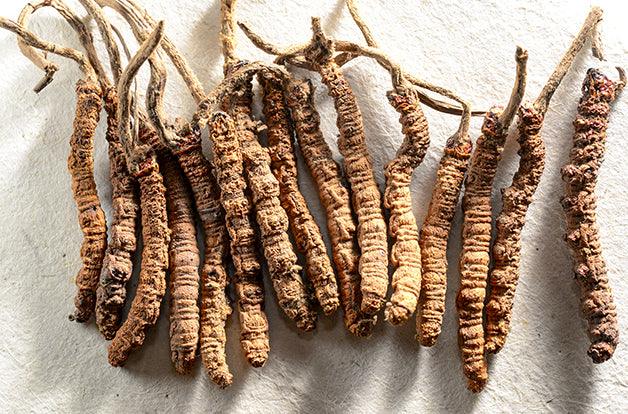
6. Cordyceps
While technically not an “herb,” this fungus is popular in TCM for managing fatigue, sickness, and more. It naturally grows on the backs of a certain species of caterpillar that lives in the mountains of Tibet, and historically, it was saved for the likes of emperors and royalty. More recently, research has shown that cordyceps helps boost immunity to the flu.
“Cordyceps offers properties of immunomodulation and resistance to any type of cellular stress,” explains Dr. Rawls. More specifically, it works by stimulating natural killer (NK) cells and macrophage activity, and also by enhancing cellular immunity, he explains.
As with Chinese skullcap, you can double up on servings of cordyceps when you need an extra immune boost beyond everyday support: Start with 450 mg once a day, then move up to 900 mg daily as needed.
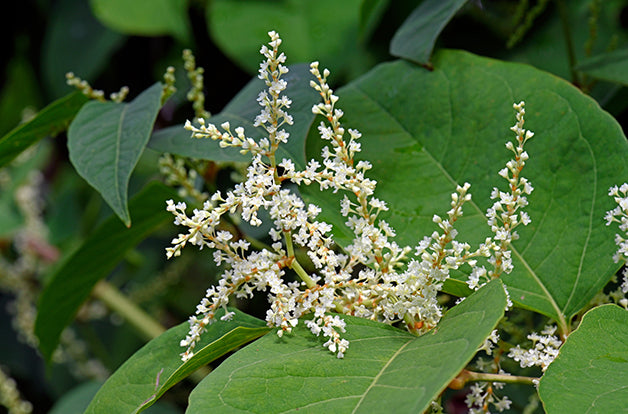
7. Japanese Knotweed
This Japanese native is a rich source of resveratrol, the chemical compound in wine that gives the adult beverage its healthy reputation. While resveratrol is probably best known for its antioxidant powers and heart health-promoting properties, Dr. Rawls also points to its antibacterial properties.
Japanese knotweed may help inhibit the growth of “bad” bacteria in your gut microbiome — again, where the bulk of your immune system exists — while increasing the growth of “good” gut bacteria, he explains. Dr. Rawls suggests taking 400 mg once or twice daily, depending on the level of cellular and immune support you need.

8. Ginger
This spicy plant does more than tamp down nausea (a benefit it’s well known for). Ginger contains nearly a dozen antiviral compounds, including some that seem to be especially effective against a common cold-causing virus, according to a paper in the International Journal of Drug Development & Research.
Extracts from both the ginger plant and root were also found to be quite effective against two pathogenic staph strains, reports a study in the Journal of Microbiology and Antimicrobials. Supplements provide the most potent dose, but you can also use ginger to flavor stir-fry dishes, eat it pickled, or brew up some ginger tea.
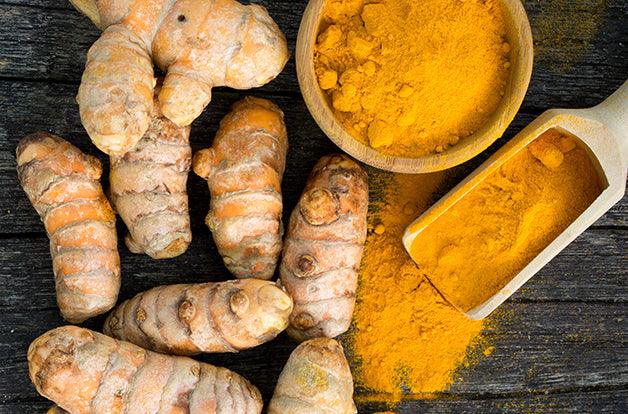
9. Turmeric
This bright-yellow spice common in Indian cuisine has been used for medicinal purposes for ages. Curcumin, one of turmeric’s main compounds, gives it its color and much of its cellular health-promoting potential.
Curcumin may help activate white blood cells and downregulate proinflammatory cytokines. It also may help enhance an antibody response and shows microbiome balancing activity.
As with ginger, eating turmeric-spiced foods is a great way to incorporate the plant into your diet, but supplements will deliver the biggest bang for your buck, Dr. Rawls says.
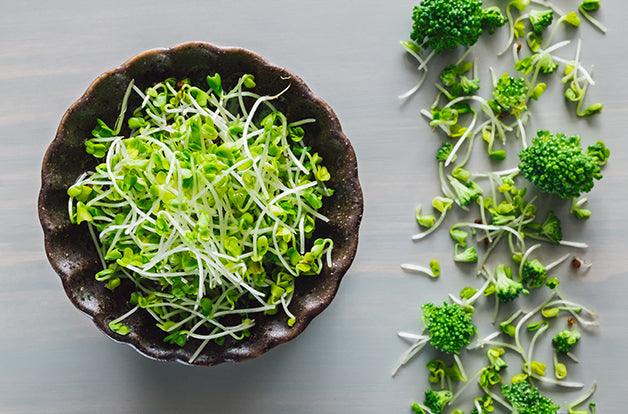
10. Broccoli Sprouts
Sprouts from baby broccoli plants contain high levels of a phytonutrient called sulforaphane, which you can also get from cauliflower, Brussels sprouts, and other cruciferous vegetables. Early research showed that consuming the sprouts could increase inflammation-fighting enzymes in the upper respiratory system.
More recently, a study published in the journal PLoS One suggested that subjects who drank a daily shake containing sulforaphane-rich broccoli sprouts got a boost against the flu virus. The researchers noted several changes to subjects’ immune cells after administering a live flu vaccine in their nostrils. Later, those who had been drinking the broccoli-sprout shakes showed lower levels of the flu virus in their nasal fluids compared to people who drank a control shake with alfalfa sprouts.
While the sprouts blend well in green smoothies and shakes, they also make a tasty addition to salads.
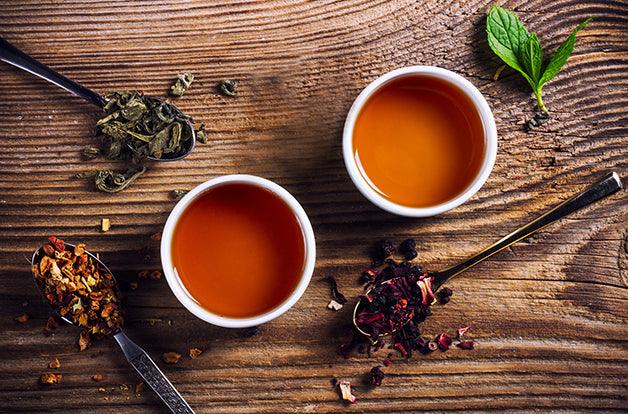
11. Black and Green Tea
Sipping a hot cup of tea is always comforting when you’re under the weather, but it may actually do more than keep you warm. A study in the journal Proceedings of the National Academy of Sciences found that drinking five cups of black tea a day seems to supercharge T cells (a type of white blood cell that plays a key role in the immune response). After two weeks of drinking the tea, the cells produced 10 times more interferon, a chemical that actively fights viruses and helps stop them from replicating.
If you prefer green tea, that can help, too. Along with quercetin, green tea also contains theanine, an amino acid that may work with other polyphenols to give your immune system a boost.
The Takeaway
Making these foods and herbs a part of your daily routine — not just during an outbreak, but always — can go a long way toward supporting cellular health and a strong and healthy immune system. Don’t forget to add in ample sleep, regular exercise, stress management, and an overall healthy diet to optimize your odds of staying well.
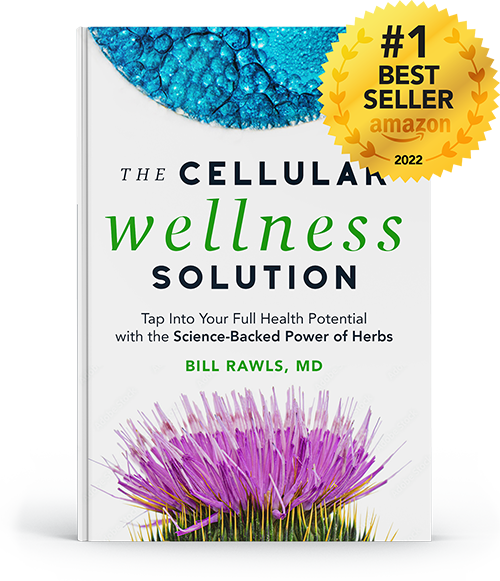
Discover more in Dr. Bill Rawls’ new #1 Bestselling book: The Cellular Wellness Solution: Tap Into Your Full Health Potential with the Science-Backed Power of Herbs.
“An eye-opening and empowering book that the world needs right now: The Cellular Wellness Solution will fundamentally change how you think about herbs and the powerful role they play in cultivating wellness at the cellular level.”


Mark Hyman, MD
Fourteen-time #1 New York Times Bestselling Author
Looking for More Wellness Tips?
Join our newsletter for bi-weekly tools, education, and savings to boost your health.
References
1. Nieman, David C. et. al. “Upper respiratory tract infection is reduced in physically fit and active adults.” British Journal of Sports Medicine. 2011; 45:987–992.
2. Trompette, Aurélien et. al. “Dietary Fiber Confers Protection against Flu by Shaping Ly6c − Patrolling Monocyte Hematopoiesis and CD8 T Cell Metabolism.” Immunity, 2018; 48 (5): 992
3. Hanson, Corinne et. al. “The Relationship between Dietary Fiber Intake and Lung Function in the National Health and Nutrition Examination Surveys.” Annals of the American Thoracic Society. Vol 13, No 5, pp 643–650, May 2016.
4. Josling, P. “Preventing the common cold with a garlic supplement: a double-blind, placebo-controlled survey.” Advances in Therapy. 2001 Jul-Aug;18(4):189-93.
5. Valverde, Maria Elena et. al. “Edible Mushrooms: Improving Human Health and Promoting Quality Life.” International Journal of Microbiology. 2015: 376387.
6. Guggenheim, Alena G. etc. al. “Immune Modulation From Five Major Mushrooms: Application to Integrative Oncology.” Integrative Medicine. 2014 Feb; 13(1): 32–44.
7. Somerville, Vaughan S. et. al. “Effect of Flavonoids on Upper Respiratory Tract Infections and Immune Function: A Systematic Review and Meta-Analysis.” Advances in Nutrition. 2016 May; 7(3): 488–497.
8. Kinker B, Comstock AT, Sajjan US “Quercetin: A Promising Treatment for the Common Cold.” Journal of Infectious Diseases & Preventative Medicine. 2014, 2:111.
9. Wagner, L. et. al. “Herbal Medicine for Cough: a Systematic Review and Meta-Analysis.” Complementary Medicine Research. 2015;22:359-368
10. Cáceres, DD et. al. “Use of visual analogue scale measurements (VAS) to assess the effectiveness of standardized Andrographis paniculata extract SHA-10 in reducing the symptoms of common cold. A randomized double blind-placebo study.” Phytomedicine. 1999 Oct;6(4):217-23.
11. Kalra, M. et. al. “Cold and Flu: Conventional vs Botanical & Nutritional Therapy.” International Journal of Drug Development & Research. Jan-March 2011, Vol. 3, Issue 1.
12. Sebiomo, A. et. al. “Comparative studies of antibacterial effect of some antibiotics and ginger (Zingiber officinale) on two pathogenic bacteria.” Journal of Microbiology and Antimicrobials. Vol.3(1), pp. 18-22, January 2011.
13. Jagetia, GC and Aggarwal, BB. “Spicing up of the immune system by curcumin.” Journal of Clinical Immunology. Jan;27(1):19-35.
14. Izui, Shusuke et. al. “Antibacterial Activity of Curcumin Against Periodontopathic Bacteria.” Journal of Periodontology. January 2016, vol. 87, issue 1, pp 83-90.
15. Bengmark, S. et al. “Plant-derived health – the effects of turmeric and curcuminoids.” Nutrición Hospitalaria. 2009;24(3):273-281
16. Muller, Loretta et. al. “Effect of Broccoli Sprouts and Live Attenuated Influenza Virus on Peripheral Blood Natural Killer Cells: A Randomized, Double-Blind Study.” PLoS One. 2016; 11(1)
17. Allan, G. Michael and Arroll, Bruce. “Prevention and treatment of the common cold: making sense of the evidence.” CMAJ: Canadian Medical Association Journal. 014 Feb 18; 186(3): 190–199.
18. Kamath, Arati B. et. al. “Antigens in tea-beverage prime human Vγ2Vδ2 T cells in vitro and in vivo for memory and nonmemory antibacterial cytokine responses.” Proceedings of the National Academy of Sciences of the United States of America. 2003 May 13; 100(10): 6009–6014.
19. Li, Chengjian et. al. “L-Theanine Improves Immunity by Altering TH2/TH1 Cytokine Balance, Brain Neurotransmitters, and Expression of Phospholipase C in Rat Hearts.” Medical Science Monitor. 2016; 22: 662–669.
20. Rowe, CA et. al. “Specific formulation of Camellia sinensis prevents cold and flu symptoms and enhances gamma,delta T cell function: a randomized, double-blind, placebo-controlled study.” Journal of the American College of Nutrition. 2007 Oct;26(5):445-52.
21. Zhang, Want et. al. “Association between dietary habits and recurrent respiratory infection in children: A case-control study.” Journal of Traditional Chinese Medical Sciences. (2015) 2, 105-110.
22. Jin BR, Chung KS, Kim HJ, An HJ. Chinese Skullcap (Scutellaria baicalensis Georgi) inhibits inflammation and proliferation on benign prostatic hyperplasia in rats. J Ethnopharmacol. 2019 May 10;235:481-488. doi: 10.1016/j.jep.2019.01.039



